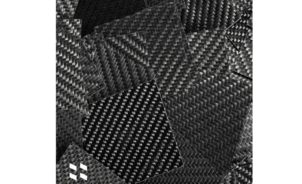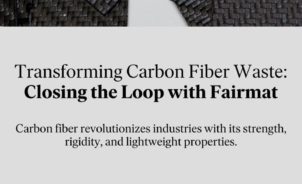We admire the fact that somebody came up with the idea that carbon fiber can be as performing underfoot as it does when cruising at 35,000 ft in the air (in an aircraft, of course).
Carbon fiber material has always been a top-sought interest for footwear designers, customers, and skeptics alike.
Be it Nike’s Vaporfly 4% carbon fiber shoes, whose unreal performance took them to the courts. Or established players, such as VKTRY, coming up with a carbon fiber add-on for the shoes.
Whether clad in airy shoes or marketed as a standalone accessory, carbon fiber has been proven to both perform and protect — and this is where we come in.
Our recycled carbon fiber materials have been adopted by global sports brands such as Decathlon for their sports equipment. And we’re right on track for helping the footwear industry transition, by incorporating ≈100% recycled carbon fiber in the shoe soles.
Let’s look at what brought us into footwear and how shoe designers and manufacturers can benefit from our sustainable insole technology.
The footwear industry is up for the challenge, and so are we.
According to a study on a running shoe, the manufacturing process accounts for 68% of its carbon footprint, with materials being the second biggest contributing element.
And the Better Shoes Foundation has listed up to 40 different materials that go into making a shoe and their impact on the environment, ranging from climate change to carcinogen exposure and oil spills.
The SBT Initiative, which helps the private sector set science-based emissions reduction targets, has cited several global footwear brands in their guide for committing to reducing GHG emissions in the upcoming years.
Indeed flattering to learn how multinationals, such as ASICS, have committed to reducing their scope 3 GHG emissions by 55% per product manufactured by 2030 from a 2015 base year.
Are the soles of all parts, worth the hassle?
So, if it takes 40 different materials to make 23 parts of a shoe, why is the sole getting all the attention?
Simply because it is where the majority of innovation happens, including ours.
Setting challenging sustainability targets will need brands to innovate at every turn. But the biggest challenge will always be keeping up with consumer expectations.
There’s no room for sustainability at the expense of product performance.
Shoe soles, therefore, will inevitably remain the “soul” of nearly all upcoming innovations in the footwear industry.
But how did we end up claiming that a sole alone could help lower the shoe’s carbon footprint? Let’s keep reading.
Is carbon fiber just the innovation we need?
We rightly believe so.
We were able to use our recycled carbon fiber composite material to manufacture carbon fiber strips or, as we prefer to call it, Carbon Fiber Chips. The chips are building blocks that can be combined and compiled for manufacturing products.
These chips are made from mechanically recycled carbon fiber composite (CFRP) scraps and end-of-life parts. We’ve developed our carbon fiber feedstock over the years by partnering with industry leaders in mobility, aerospace, and other related industries.
Our quality supplies from our partners and our proprietary mechanical recycling process allow us to produce materials with properties fairly comparable to virgin carbon fiber materials.
Recycling this incoming waste in-house helped us explore many product-material fits. And we could develop a recycled material that has endless performance benefits due to its lightweight and durability characteristics.
Carbon fiber’s strength, lightweight, and durability are no secret any longer. But recycled, sustainable materials and especially carbon fiber materials, could be just the innovation we need at the time.
Recycled Carbon Fiber Materials has the potential to enhance the shoe’s performing abilities while;
- Reducing the shoe’s overall carbon footprint.
- Completely avoiding the use of virgin materials by replacing them.
- Create demand for recycled, non-renewable materials.
- Give a second use and purpose to outdated, expired products.
- Incorporate a Circular Economy mindset into the footwear industry.
We’ll not stop exploring each of these in further detail for many other low-carbon-impact applications but why not do it together?




